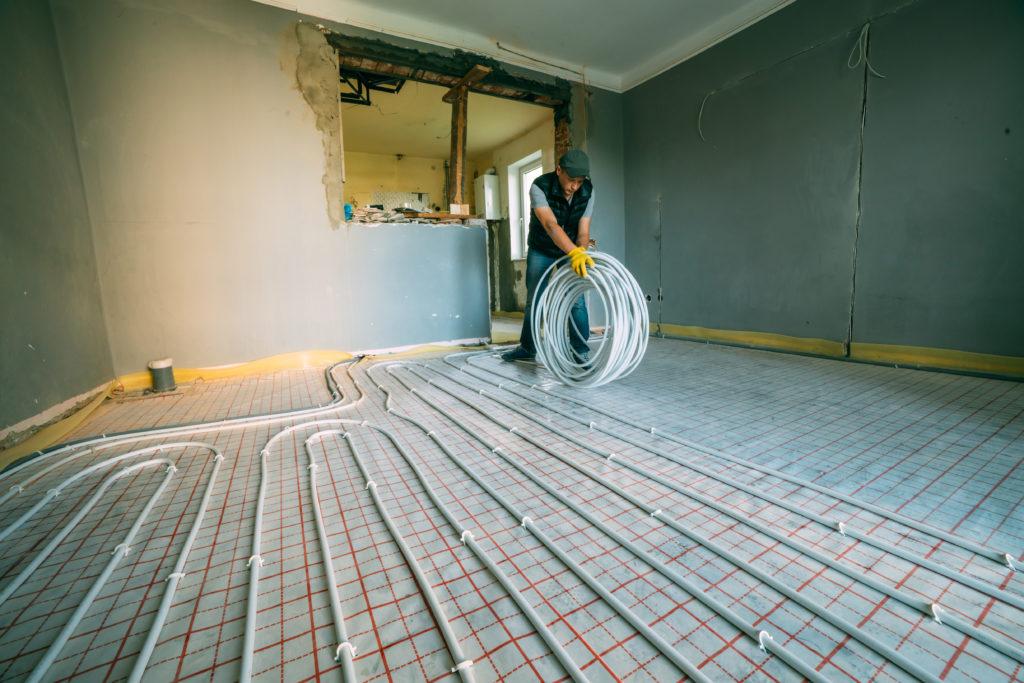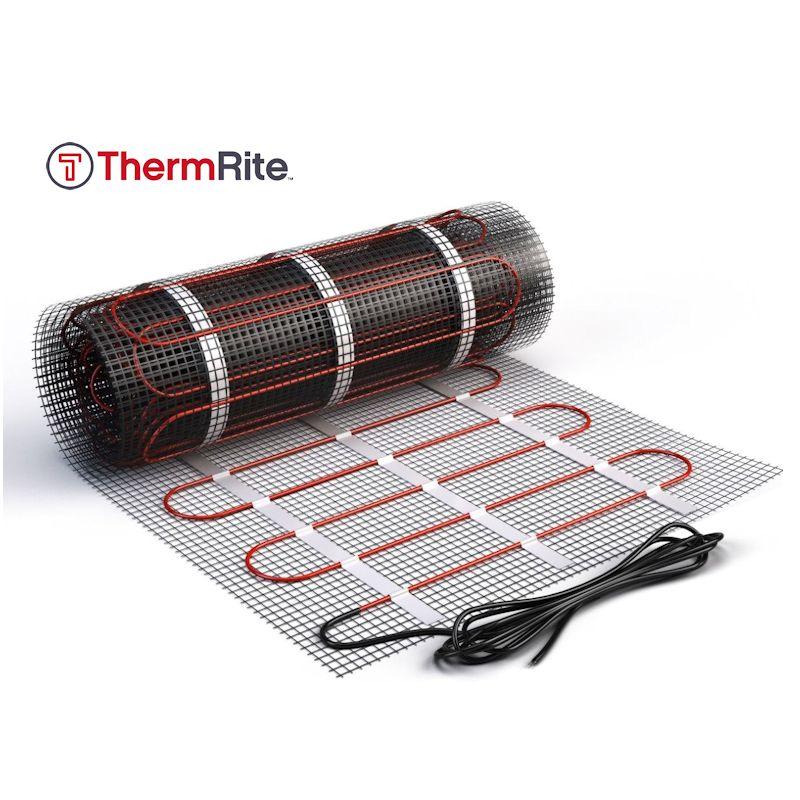Contents
- Introduction
- What Is Underfloor Heating?
- What Is Central Heating?
- Underfloor Heating Vs Central Heating – Comparison
- Final Verdict
Introduction
In the past few years, people immediately thought of central heating systems such as boilers or radiators when they wanted heating systems in their houses.
However, in recent times, people are inclining more toward underfloor heating systems because of their energy-efficient performance and versatile nature.
When considering which form of heating system to install in their properties, they might internally undergo a mini battle of comparison of both the central and underfloor heating systems.
Can underfloor heating perform more efficiently than traditional central heating? To understand that, here’s an evaluation of both underfloor and central heating systems.

What Is Underfloor Heating?
Underfloor heating is a heating system fitted under the floor and transforms the floor of the house into a heat emitter. Underfloor heating systems come in two different types; water-based underfloor heating and electric underfloor heating.
The water-based underfloor heating has a network of small water tubes beneath the floor surface where warm water circulates to heat the floor above. Electric underfloor heating consists of electric cables fitted underneath the floor surface that make the floor warm.
What Is Central Heating?
A central heating system provides warmth in the whole house or a building from a heating source or a central point. This central point consists of either a boiler, radiator, or pipework which is connected throughout the house to keep it warm.
Underfloor Heating Vs Central Heating – Comparison
Installation Process
The initial installation process of central heating systems is easy and takes less time than installing a radiator. The central heating system needs to be installed into the wall. The installation process of underfloor heating systems is a bit tricky and takes more time.
The time also depends on several scenarios. The installation process of wet and electric underfloor heating systems varies, hence the time is also different for both processes. However, it’s always a task of 1-2 days or a maximum of 5 days.
This happens because the underfloor heating systems need to be fitted under the floor, which requires the floor to be dug up and the screed to completely dry before the application of floor coverings or tiles.
Performance Efficiency
Let’s evaluate the initial performance of both these heating systems.
The underfloor heating systems have no cold spots or draughts compared to central heating systems, which create uneven heat distribution. Both of these systems have different heat distributions.
Underfloor heating works to heat the floor first to heat the room to prevent cold spots or uneven heat distribution.
Initially, it warms the floor and your feet which creates a feeling of radiated heat. This also helps warm up other heat-conductive things in the room and holds the warmth much longer.
Whereas central heating systems heat the air inside the room, which rises to the ceiling as it gets warm and falls back to the floor as it cools down.
Throughout this process, the central heating system focuses on one corner of the room, making the air circle around in one spot, and creating cold spots in the other corners.
Durability
The durability of both these heating systems depends on how well maintained they are kept throughout the years.
Central heating systems have a service life of about 10 to 15 years if they are of high quality and well maintained. However, they can wear and tear with frequent use, as all machines do and may not perform at their most efficient level.
On the other hand, underfloor heating systems could last you about 45 to 50 years. Provided that they are well maintained and undergo professional servicing now and then to ensure that everything stays in order.
Safety and Hygiene
In light of safety and hygiene, underfloor heating also serves many advantages as compared to central heating.
Central heating items, such as radiators, tend to have sharp corners and hot surfaces, making them extremely unsafe for kids and pets inside the house. Whereas underfloor heating systems are completely out of sight and touch because they are fitted under the floor.
Moreover, from a hygienic point of view, central heating’s process of heating air causes dust particles to circle in the air, causing allergies and unhygienic conditions for sensitive people. These particles cause coughs and sneezing in both allergic and asthmatic people.
Energy Efficient
Central heating uses a lot of energy to heat the room as compared to underfloor heating systems.
Underfloor heating uses less energy to run. On average, it uses around 14%-15% less energy as it can heat the room at a lower temperature and make the heat last for a long time.
Central heating systems tend to have a small surface area requiring them to produce a lot of heat to make the room warm. Underfloor heating systems are placed under the floor’s surface to help distribute heat evenly even at low temperatures.
Moreover, underfloor heating systems can utilize energy from renewable sources such as solar panels or heat pumps. This causes underfloor heating to be energy efficient. Plus, this can lower your energy bills.
Cost
Underfloor heating systems tend to have higher installation and purchasing costs than central heating systems. This is because the underfloor heating system requires various parts and has a longer installation process than the central heating system.

Even though it’s upsetting that the initial costs of underfloor heating take a big chunk of money off one’s hand, it is a huge investment since it pays back in the long run with high energy savings. Moreover, underfloor heating also adds value to your property.
You will be able to cut utility bills because of this energy-efficient heating system.
Final Verdict
Even if central heating was the go-to for many older generations, times have changed and so have people’s preferences.
Underfloor heating has an edge when it comes to heating a home and providing a cosy and comforting atmosphere. Overall, underfloor heating is cost-effective and worth every penny.



